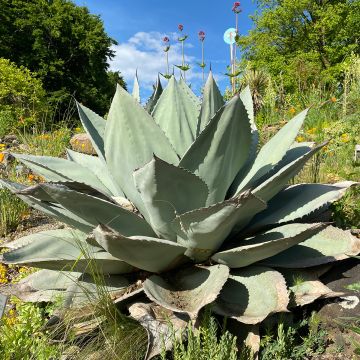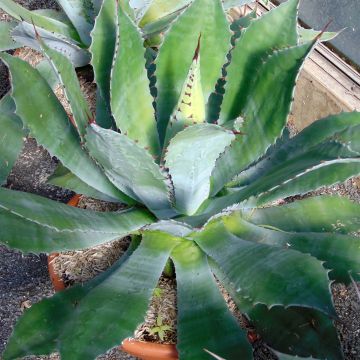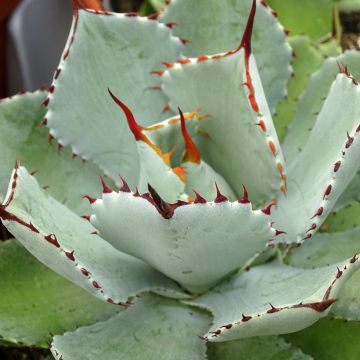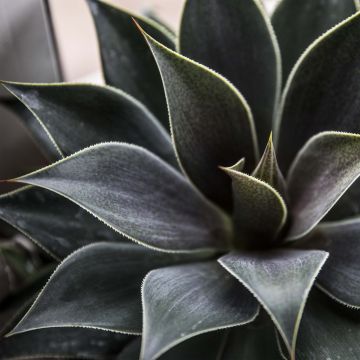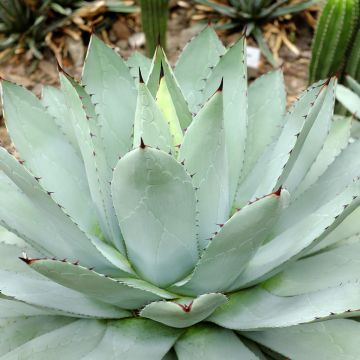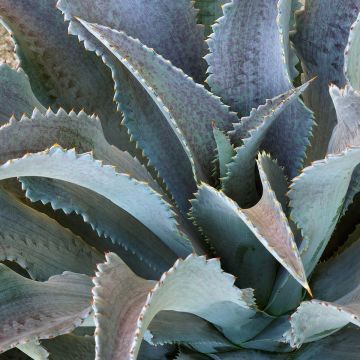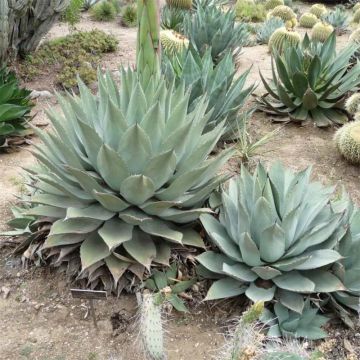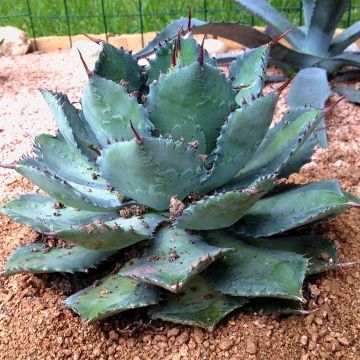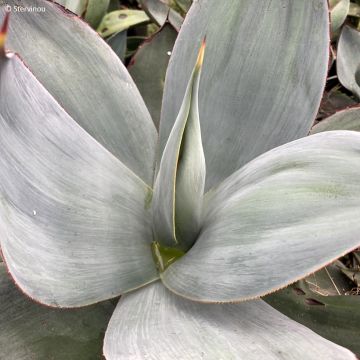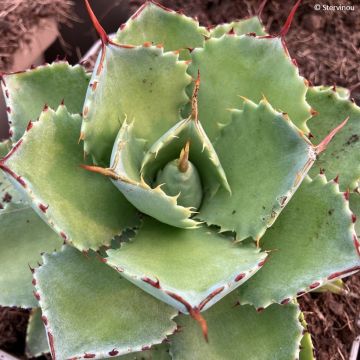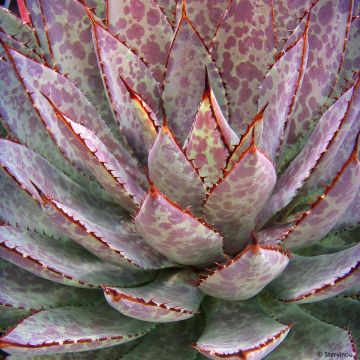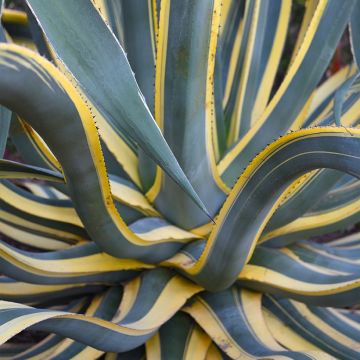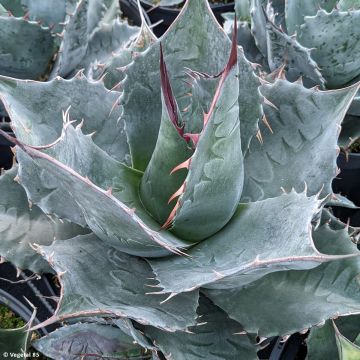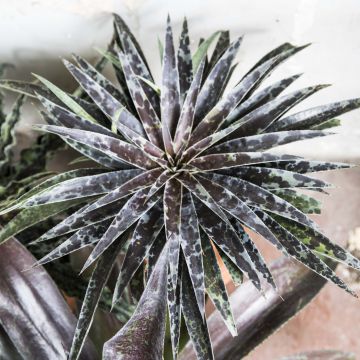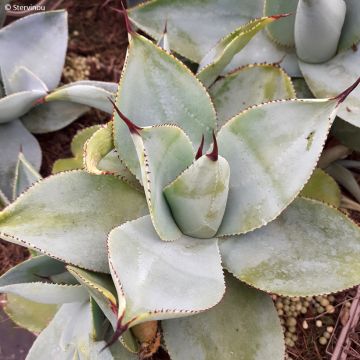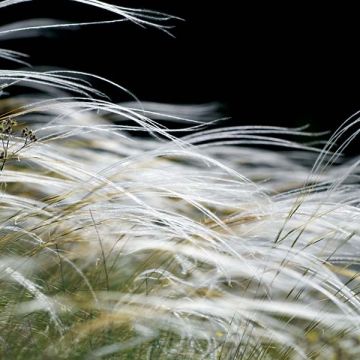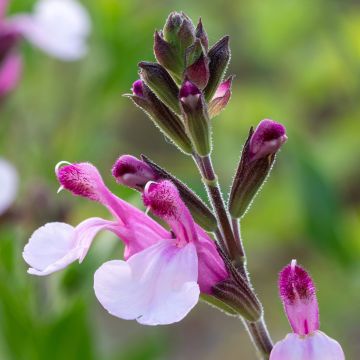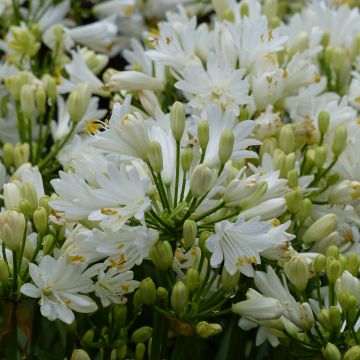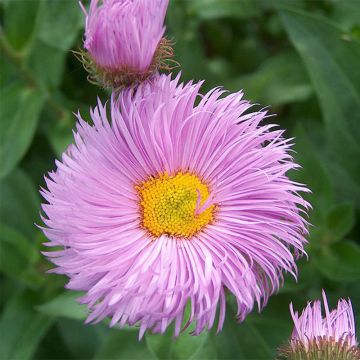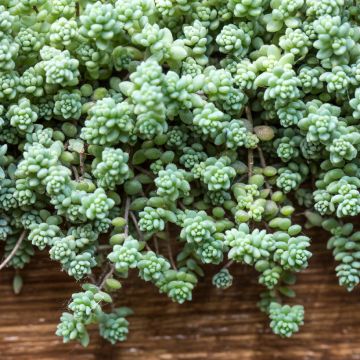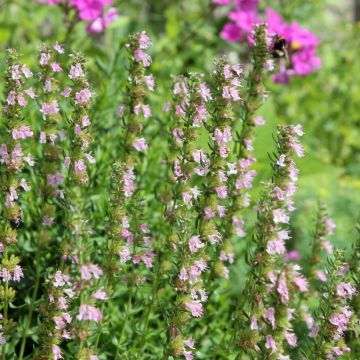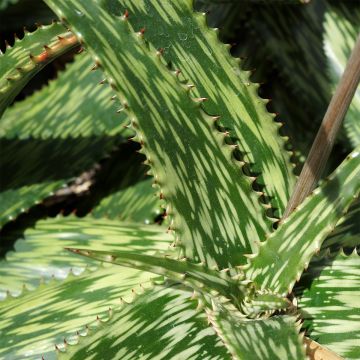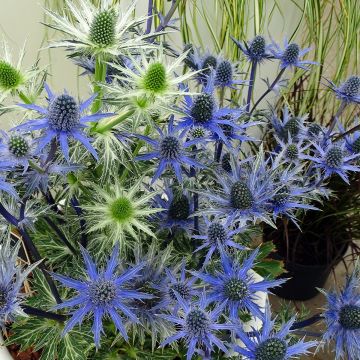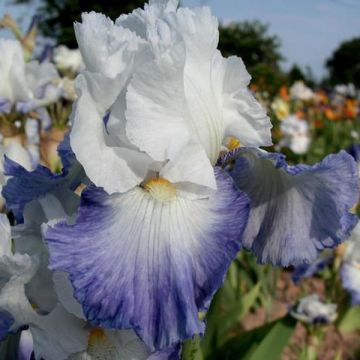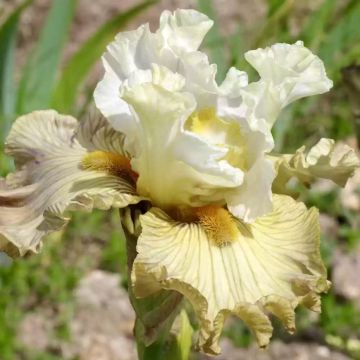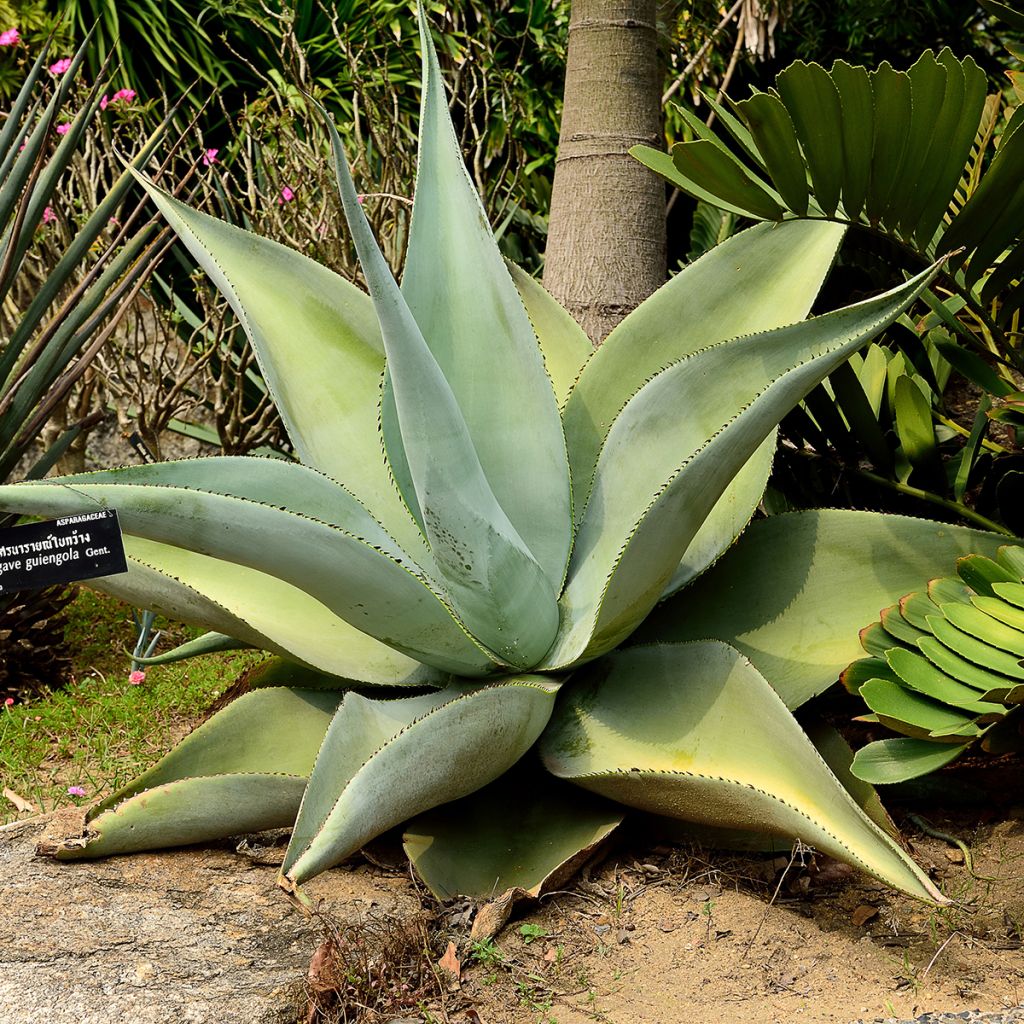

Agave guiengola
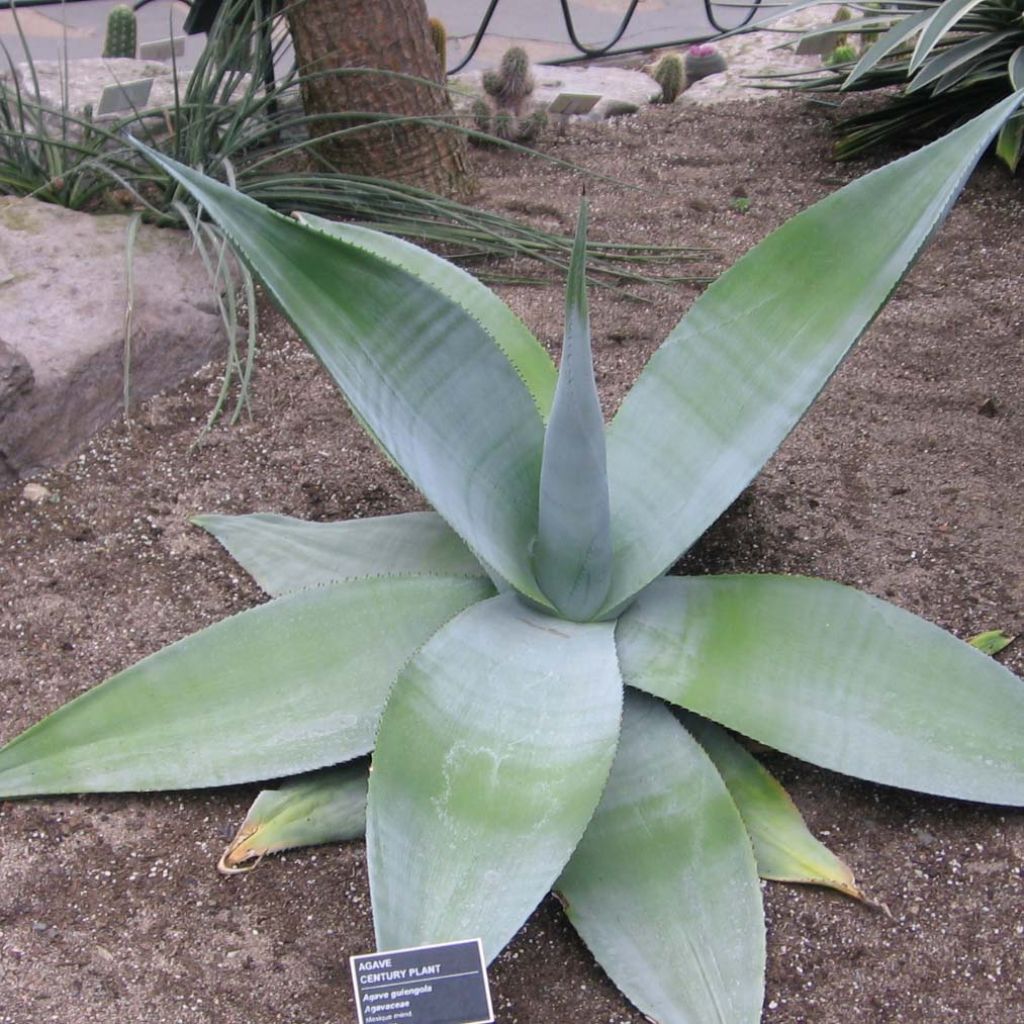

Agave guiengola
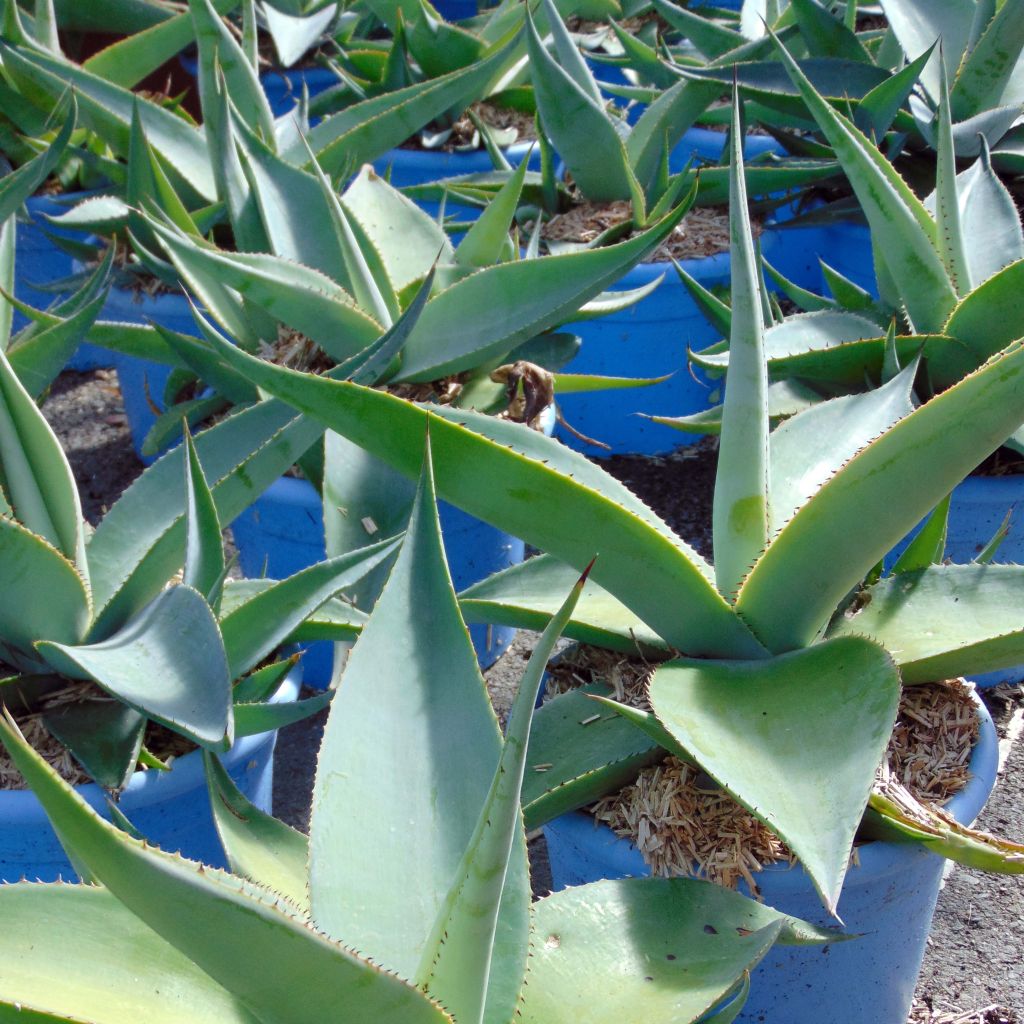

Agave guiengola
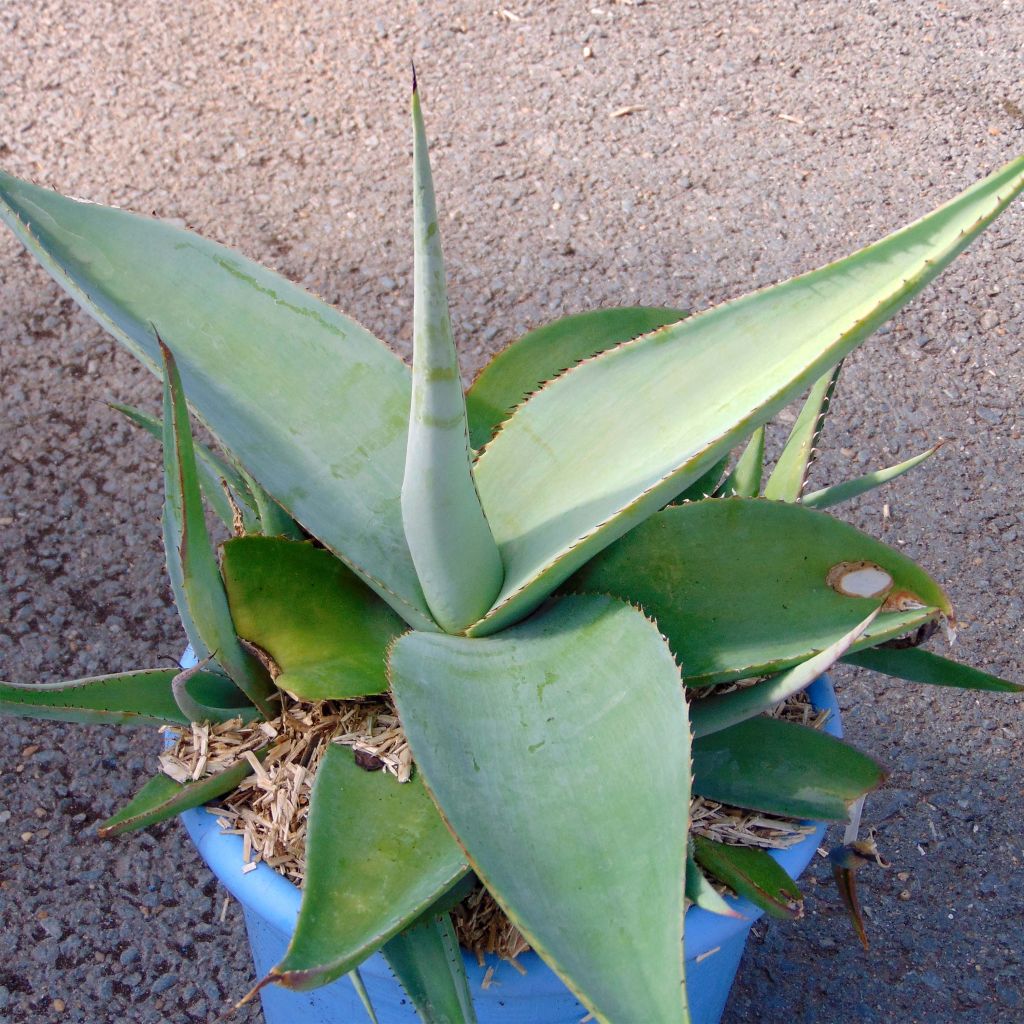

Agave guiengola
Agave guiengola
Agave guiengola
Why not try an alternative variety in stock?
View all →This plant carries a 12 months recovery warranty
More information
We guarantee the quality of our plants for a full growing cycle, and will replace at our expense any plant that fails to recover under normal climatic and planting conditions.
From €5.90 for pickup delivery and €6.90 for home delivery
Express home delivery from €8.90.
Does this plant fit my garden?
Set up your Plantfit profile →
Description
Agave guiengola is a frost-sensitive botanical species, which will delight succulent plant collectors. This medium-sized agave forms a very open rosette, composed of large fleshy, brittle, pruinose, grey-green leaves, resembling those of Aloes. Some mature individuals, when subjected to intense drought, develop attractive pink or orange polychrome streaks on their leaves. Its moderate growth, architectural habit, and temperament naturally make this perennial plant suitable for cultivation in pots, to be stored frost-free. It will be well highlighted in a contemporary, minimalist garden, or at the heart of a profusion of exotic plants.
Originally from Guiengola, located in the Gulf of Tehuantepec in Mexico, Agave guiengola is primarily a plant of the subtropical coastal plain, well adapted to arid conditions, in a climate spared by frost. It belongs to the Asparagaceae family (formerly Agavaceae), just like yuccas or tuberose. This perennial succulent herbaceous plant has rhizomes capable of producing suckers, but it is almost devoid of aerial stems. The open basal rosette will not exceed 1m (3ft) in diameter and height. It is composed of less than 20 succulent leaves, very wide at the base, fleshy and tough, sometimes bulging on top, always thickened at the base, covered with bluish-white bloom, and bordered by tiny reddish to greyish spines. When a rosette reaches the venerable age of 15 to 20 years, or even more, it produces a flowering stem reaching 2 to 3m (7 to 10ft) in height. It bears numerous horizontal branches. The branches bear flattened and spherical panicles, composed of a myriad of small yellow-green tubular flowers. The rosette, called semelparous, dies after several months of flowering, having taken care to produce numerous small peripheral rosettes to ensure its perpetuity. Curiously, some individuals seem not to produce suckers.
In very mild climates, this agave will find its place in a large rockery, a dry slope, or in a raised bed whose soil has been enriched with gravel or coarse sand. It can be planted with frost-resistant prickly pears such as Opuntia humifusa 'Millevaches', giant fennel, hardy candle cacti (Cleistocactus strausii, Cylindropuntia imbricata), and ground-covering plants such as dwarf mugworts, Rhodanthemum, and Ajania pacifica, which are all equally undemanding. Gardeners in colder regions can plant it in a very large pot on a terrace, carefully choosing the sunniest and most sheltered location to recreate a garden inspired by those that flourish at the end of the world. This frost-sensitive plant should be overwintered in a bright, well-ventilated room, kept frost-free.
Agave is also an edible plant, used in Mexico to make mescal, an alcoholic beverage obtained by fermenting its sugar-rich juice. It is also used in traditional medicine in Mexico, Brazil, and India for its supposed anti-fungal properties. The inflorescences are highly attractive to many pollinating insects.
Report an error about the product description
Agave guiengola in pictures
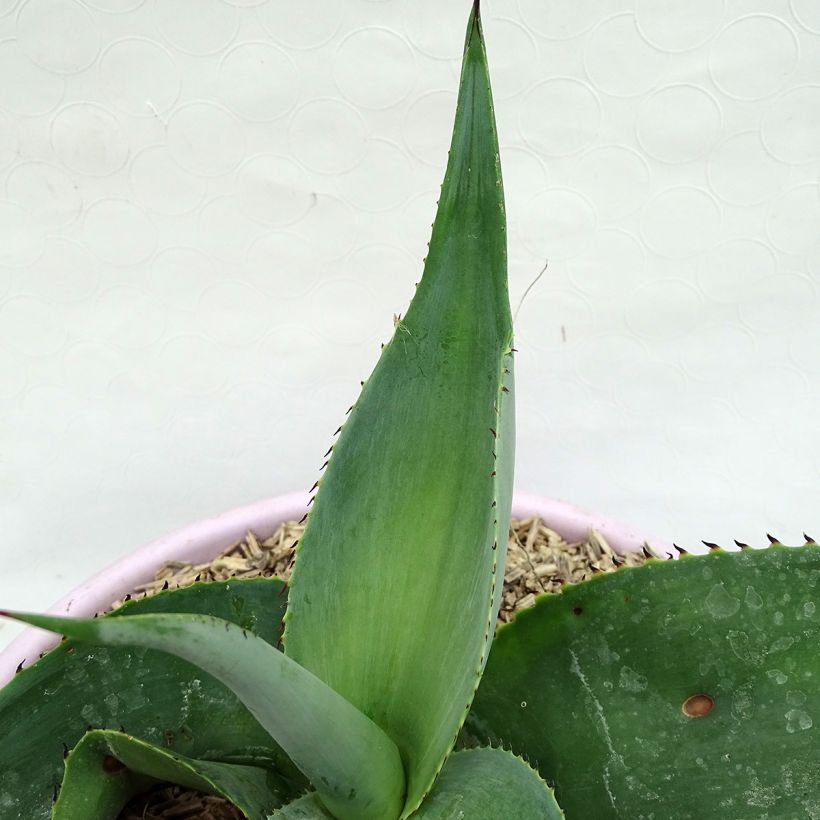

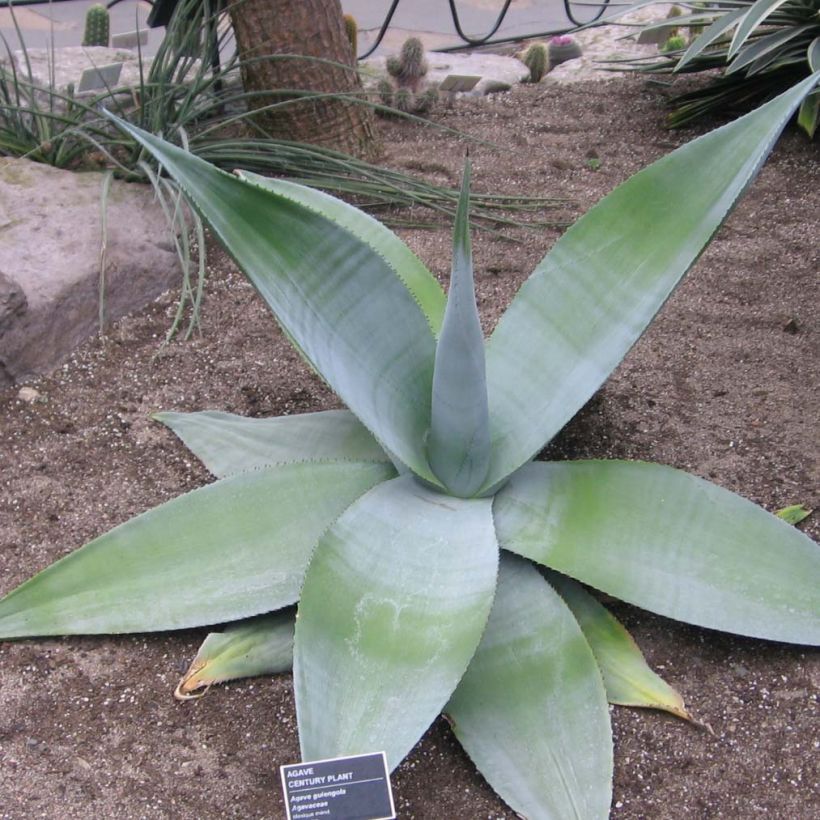

Flowering
Foliage
Plant habit
Botanical data
Agave
guiengola
Agavaceae
North America
Other Agave
Planting and care
Plant Agave guiengola in full sun, in preferably poor soil that is well-drained. It will tolerate rocky, chalky (the plant grows on alkaline soils in its natural environment), and sandy soil if it is well-drained. It fears winter humidity, especially when combined with frost, but tolerates perfectly dry soils in summer once well-rooted. It will withstand frosts down to about -1°C (30.2°F).
In colder regions, it should be grown in a large, wide, and deep pot (preferably terracotta) with drainage holes at the bottom. You can also grow it in a wooden container. It should be stored indoors or in a cold greenhouse during winter, protected from frost, with reduced water supply.
Planting period
Intended location
Care
-
, onOrder confirmed
Reply from on Promesse de fleurs
Mediterranean perennials
Haven't found what you were looking for?
Hardiness is the lowest winter temperature a plant can endure without suffering serious damage or even dying. However, hardiness is affected by location (a sheltered area, such as a patio), protection (winter cover) and soil type (hardiness is improved by well-drained soil).

Photo Sharing Terms & Conditions
In order to encourage gardeners to interact and share their experiences, Promesse de fleurs offers various media enabling content to be uploaded onto its Site - in particular via the ‘Photo sharing’ module.
The User agrees to refrain from:
- Posting any content that is illegal, prejudicial, insulting, racist, inciteful to hatred, revisionist, contrary to public decency, that infringes on privacy or on the privacy rights of third parties, in particular the publicity rights of persons and goods, intellectual property rights, or the right to privacy.
- Submitting content on behalf of a third party;
- Impersonate the identity of a third party and/or publish any personal information about a third party;
In general, the User undertakes to refrain from any unethical behaviour.
All Content (in particular text, comments, files, images, photos, videos, creative works, etc.), which may be subject to property or intellectual property rights, image or other private rights, shall remain the property of the User, subject to the limited rights granted by the terms of the licence granted by Promesse de fleurs as stated below. Users are at liberty to publish or not to publish such Content on the Site, notably via the ‘Photo Sharing’ facility, and accept that this Content shall be made public and freely accessible, notably on the Internet.
Users further acknowledge, undertake to have ,and guarantee that they hold all necessary rights and permissions to publish such material on the Site, in particular with regard to the legislation in force pertaining to any privacy, property, intellectual property, image, or contractual rights, or rights of any other nature. By publishing such Content on the Site, Users acknowledge accepting full liability as publishers of the Content within the meaning of the law, and grant Promesse de fleurs, free of charge, an inclusive, worldwide licence for the said Content for the entire duration of its publication, including all reproduction, representation, up/downloading, displaying, performing, transmission, and storage rights.
Users also grant permission for their name to be linked to the Content and accept that this link may not always be made available.
By engaging in posting material, Users consent to their Content becoming automatically accessible on the Internet, in particular on other sites and/or blogs and/or web pages of the Promesse de fleurs site, including in particular social pages and the Promesse de fleurs catalogue.
Users may secure the removal of entrusted content free of charge by issuing a simple request via our contact form.
The flowering period indicated on our website applies to countries and regions located in USDA zone 8 (France, the United Kingdom, Ireland, the Netherlands, etc.)
It will vary according to where you live:
- In zones 9 to 10 (Italy, Spain, Greece, etc.), flowering will occur about 2 to 4 weeks earlier.
- In zones 6 to 7 (Germany, Poland, Slovenia, and lower mountainous regions), flowering will be delayed by 2 to 3 weeks.
- In zone 5 (Central Europe, Scandinavia), blooming will be delayed by 3 to 5 weeks.
In temperate climates, pruning of spring-flowering shrubs (forsythia, spireas, etc.) should be done just after flowering.
Pruning of summer-flowering shrubs (Indian Lilac, Perovskia, etc.) can be done in winter or spring.
In cold regions as well as with frost-sensitive plants, avoid pruning too early when severe frosts may still occur.
The planting period indicated on our website applies to countries and regions located in USDA zone 8 (France, United Kingdom, Ireland, Netherlands).
It will vary according to where you live:
- In Mediterranean zones (Marseille, Madrid, Milan, etc.), autumn and winter are the best planting periods.
- In continental zones (Strasbourg, Munich, Vienna, etc.), delay planting by 2 to 3 weeks in spring and bring it forward by 2 to 4 weeks in autumn.
- In mountainous regions (the Alps, Pyrenees, Carpathians, etc.), it is best to plant in late spring (May-June) or late summer (August-September).
The harvesting period indicated on our website applies to countries and regions in USDA zone 8 (France, England, Ireland, the Netherlands).
In colder areas (Scandinavia, Poland, Austria...) fruit and vegetable harvests are likely to be delayed by 3-4 weeks.
In warmer areas (Italy, Spain, Greece, etc.), harvesting will probably take place earlier, depending on weather conditions.
The sowing periods indicated on our website apply to countries and regions within USDA Zone 8 (France, UK, Ireland, Netherlands).
In colder areas (Scandinavia, Poland, Austria...), delay any outdoor sowing by 3-4 weeks, or sow under glass.
In warmer climes (Italy, Spain, Greece, etc.), bring outdoor sowing forward by a few weeks.

































